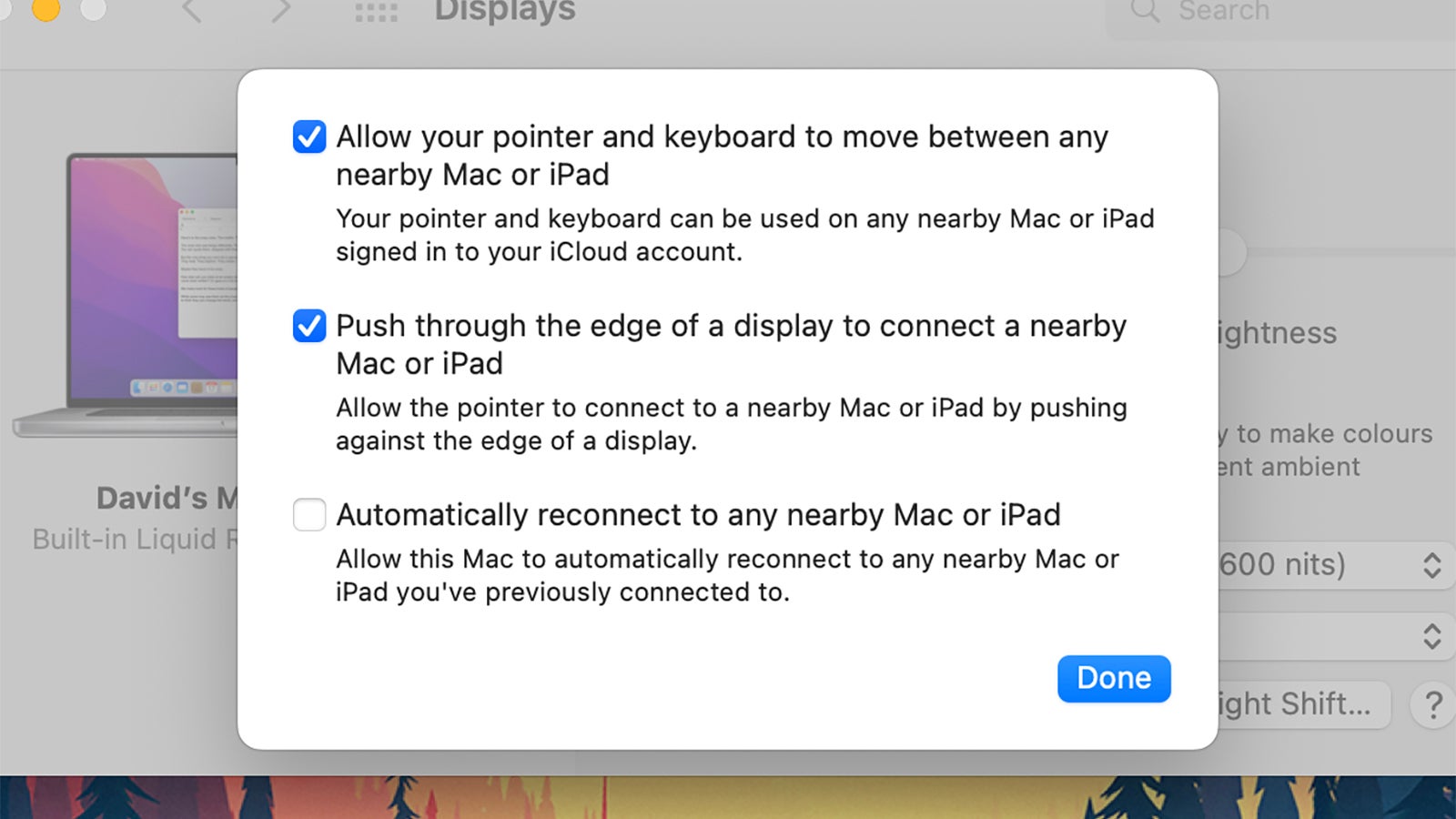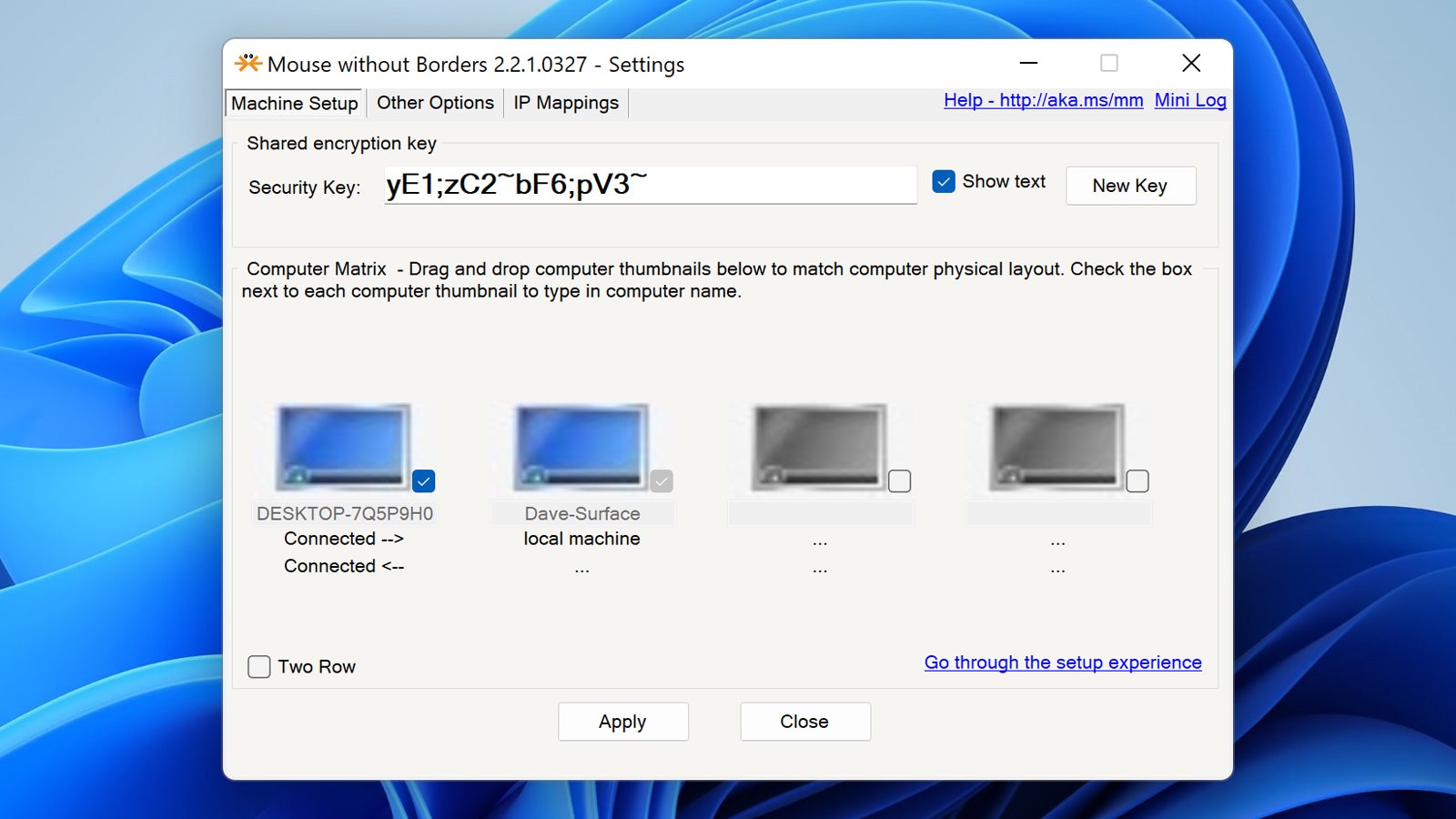For a lot of us, day-to-day computing involves using more than one computer — and sometimes more than one computer operating system too. That can mean a lot of wires and a lot of swapping between keyboards, mice and trackpads, but there are now multiple hardware and software options for sharing one set of input devices between several laptop or desktop computers.
Universal Control

The new arrival in this particular field is of course Universal Control from Apple, which works with Macs and iPads. The keyboard and mouse (or trackpad) of one main Mac can be used to control up to two other nearby Mac or iPad devices, and you get a limited amount of drag and drop support thrown in as well.
For everything to work, Universal Control needs to be switched on. From macOS System Preferences, this is done via Displays and Universal Control; from iPad Settings, you need to go to General and AirPlay & Handoff, and turn on Cursor and Keyboard. With that done, all your devices need to be close together, signed into the same Apple ID, and on the same network.
Meet all of those criteria, and moving the cursor off the edge of one device should see it land on another (you can control the arrangement in Displays in System Preferences). If you’re only on Apple devices, then it’s the option that probably makes most sense: It’s built right into macOS and iPadOS, and doesn’t need much in the way of setup.
Mouse Without Borders

Microsoft actually has its own version of Universal Control, though you might not have heard of it: Mouse Without Borders is a “Garage project” by Microsoft employee Truong Do, which means that they worked on it in their spare time. As you might expect, it’s basic and it’s only available for Windows, but it does the job.
To get everything set up, you install Mouse Without Borders on the computers you want to use it with, then use the security codes displayed on each screen to get connected across a local network. You’ll be prompted to indicate how your computer displays are positioned, and then it’s just a case of moving the mouse cursor off the screen edge to another computer to switch control.
You’re able to use any keyboard and mouse connected to any of your computers as the input devices here, and it’s more stable and reliable than you might think a side project would be. The utility works with up to four computers, and supports additional features such as file drag and drop and text copy and paste.
Synergy

Synergy has been around for a lot longer than Universal Control and Mouse Without Borders, and it’s more comprehensive too — not least because it operates on Windows as well as macOS. Pricing starts at $US29 (around $40) for the basic edition, which covers you for three different computers: The computer with your main keyboard and mouse attached acts as the server, and the others are clients, as configured in the Synergy software.
Once Synergy can see all the computers — which should take seconds, as long as they’re on the same network — you can tell it how your screens are laid out. Then it’s just a question of swiping the cursor off the edge of one screen on to another (much as you might do with multiple monitors) to change the computer that you’re in control of.
Delve deeper into the Synergy software and you can set up customised keyboard shortcuts, which comes in very handy if you’re using Windows and macOS computers in tandem, and clipboard syncing. There are alternatives available, including ShareMouse, which works in a similar way: That’s free, but only for basic functionality on two computers, and subsequent pricing starts at $US95 (around $132).
Logitech Flow

Long-established purveyor of input devices, Logitech, has its own solution for using one keyboard and mouse with several computers. It’s called Logitech Flow. You’ll find it available as part of the Logi Options software package, and as you might expect, you’re going to need Logitech peripherals for this to work.
Once you’ve connected your keyboard and your mouse through the Logi Options software and installed the application on every computer you’re using, Logitech Flow works in a similar way to the other solutions we’ve covered in this list. Under the Flow tab on the mouse configuration screen, you can set out how your screens and computers are arranged. After that, you can switch devices by dragging the mouse cursor off the edge of one display on to another.
If you prefer, you can use a keyboard shortcut to switch between computers (click the Switch between computers option). There’s plenty more to explore in the software as well, from being able to transfer files between computers, to setting up custom keyboard shortcuts that work across all the platforms you’re using.
A Keyboard Video Mouse (KVM) switch

Your other option is to take the hardware route with a KVM (Keyboard Video Mouse) switch: Your keyboard and mouse of choice plug into the switch, and then all your other computers connect to the switch rather than the peripherals directly. A physical button or a keyboard shortcut controls the switching.
The key advantage here over the software solutions that we’ve mentioned is that extra ‘V’ for video — you only need one monitor. You can have multiple computers hidden away under your desk while keeping everything looking uncluttered and serene on the surface with a single monitor, keyboard and mouse. It also means that if you’ve got a high-end, expensive monitor, it doesn’t have to be limited to one device.
Some people prefer the hardware option so they’re not relying on Wi-Fi connectivity and don’t have to deal with software quirks; others would rather stick to an application and not have another device on their desks. KVM switches are available from the usual electronics retailers, and depending on how many connections you need and the type of connections, can range in cost from a handful of dollars to several hundred dollars.
